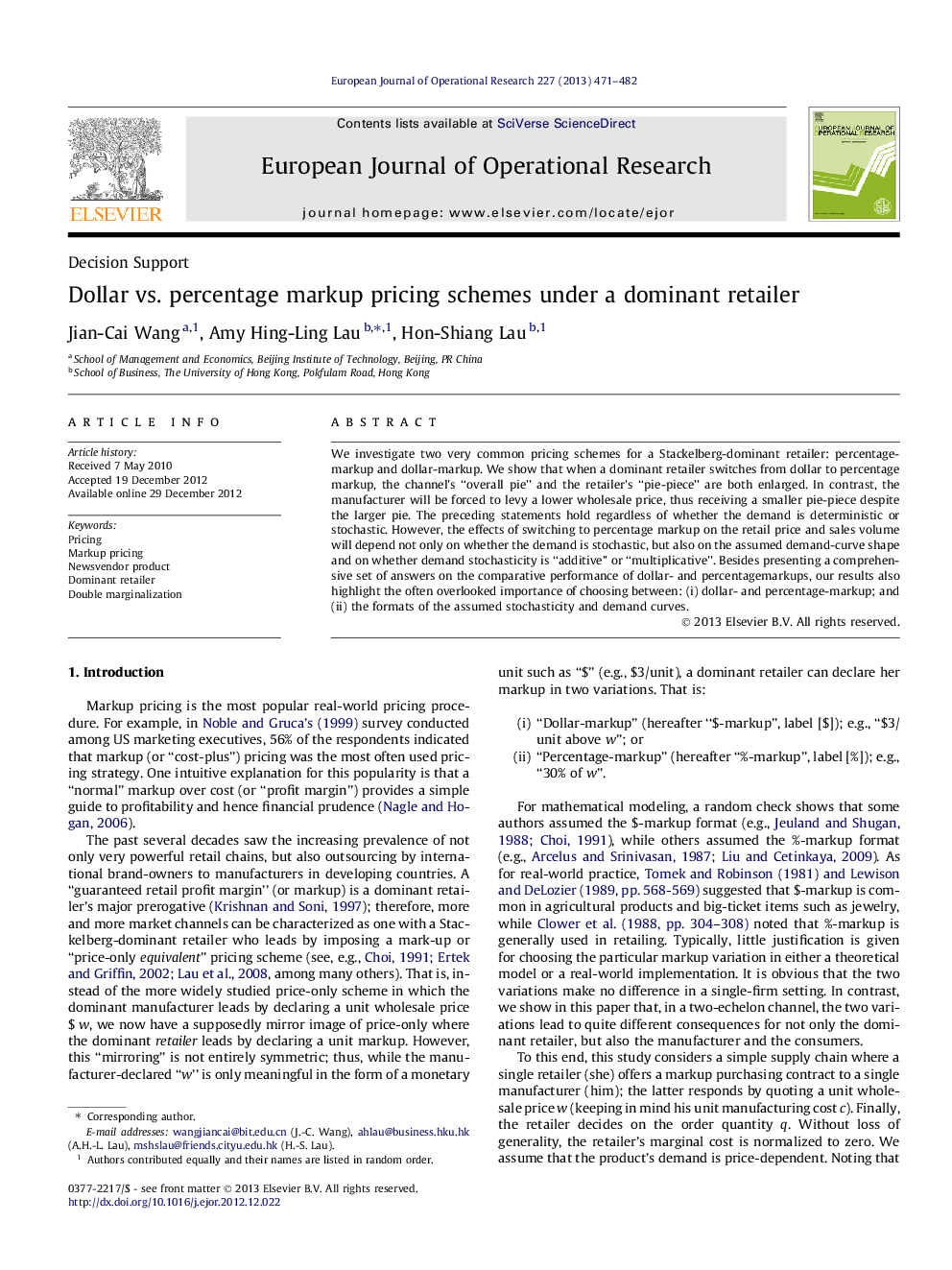| Article ID | Journal | Published Year | Pages | File Type |
|---|---|---|---|---|
| 476749 | European Journal of Operational Research | 2013 | 12 Pages |
We investigate two very common pricing schemes for a Stackelberg-dominant retailer: percentage-markup and dollar-markup. We show that when a dominant retailer switches from dollar to percentage markup, the channel’s “overall pie” and the retailer’s “pie-piece” are both enlarged. In contrast, the manufacturer will be forced to levy a lower wholesale price, thus receiving a smaller pie-piece despite the larger pie. The preceding statements hold regardless of whether the demand is deterministic or stochastic. However, the effects of switching to percentage markup on the retail price and sales volume will depend not only on whether the demand is stochastic, but also on the assumed demand-curve shape and on whether demand stochasticity is “additive” or “multiplicative”. Besides presenting a comprehensive set of answers on the comparative performance of dollar- and percentagemarkups, our results also highlight the often overlooked importance of choosing between: (i) dollar- and percentage-markup; and (ii) the formats of the assumed stochasticity and demand curves.
► The important differences between $- and %-based retail markups are often overlooked. ► Switching from $- to %-based markup always improve retailer’s profit and channel efficiency. ► However, the manufacturer gets a lower profit. ► Demand curve modeling significantly affects the performance of the two markup schemes.
